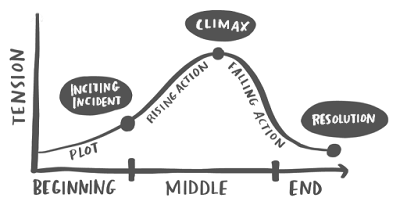The Learning Path
In one of the first entries we talked about backward planning as one of the key principles in the approach. In this entry I'd like to talk about the learning path. Backward planning means that my first thought in the process of planning a lesson is about what I would like to achieve with my students, or what my students will have to produce at the end of the unit. To further clarify my expectations, I ask myself about the characteristics of this production, what it should look like, and what my students can be expected to achieve in the unit. This is what goes into the "level expected" column on the first page of the planning grid. This process is essential, as it will give me - and my students - a clear sense of direction, and everything we do in class will help them achieve this final production.
However, so far this is no more than an aim, and my students are not able to reach it by themselves - they need to reflect on the characteristics of the text they have to produce, they have to learn vocabulary, grammar, the handling of a camera or the way in which they can catch the audience's attention. All of these are building blocks for their final production, and in the Approach we have visualized them as forming a learning path that students will transit together with their teacher.
This learning path is formed by the different tasks I include in the unit to make sure the students have the necessary language, but also understanding of the text, the required skills, etc. that will allow them to create a skilful text at the end of the unit. This means that, step by step, we will be building up students' ability to be able to reach the final goal: the text production. This progression means that the teaching is success-oriented, and for me personally this is one of its great strengths: it builds up students' abilities and makes it possible for them to succeed. And because all they do in the unit will be of use for their final production, the tasks and their contents are likely to be meaningful and relevant in their eyes.




I love the explanation of the image at the end
ReplyDeleteThank you very much! The image was actually designed by a professional - my daughter Sara Candel :-)
ReplyDelete